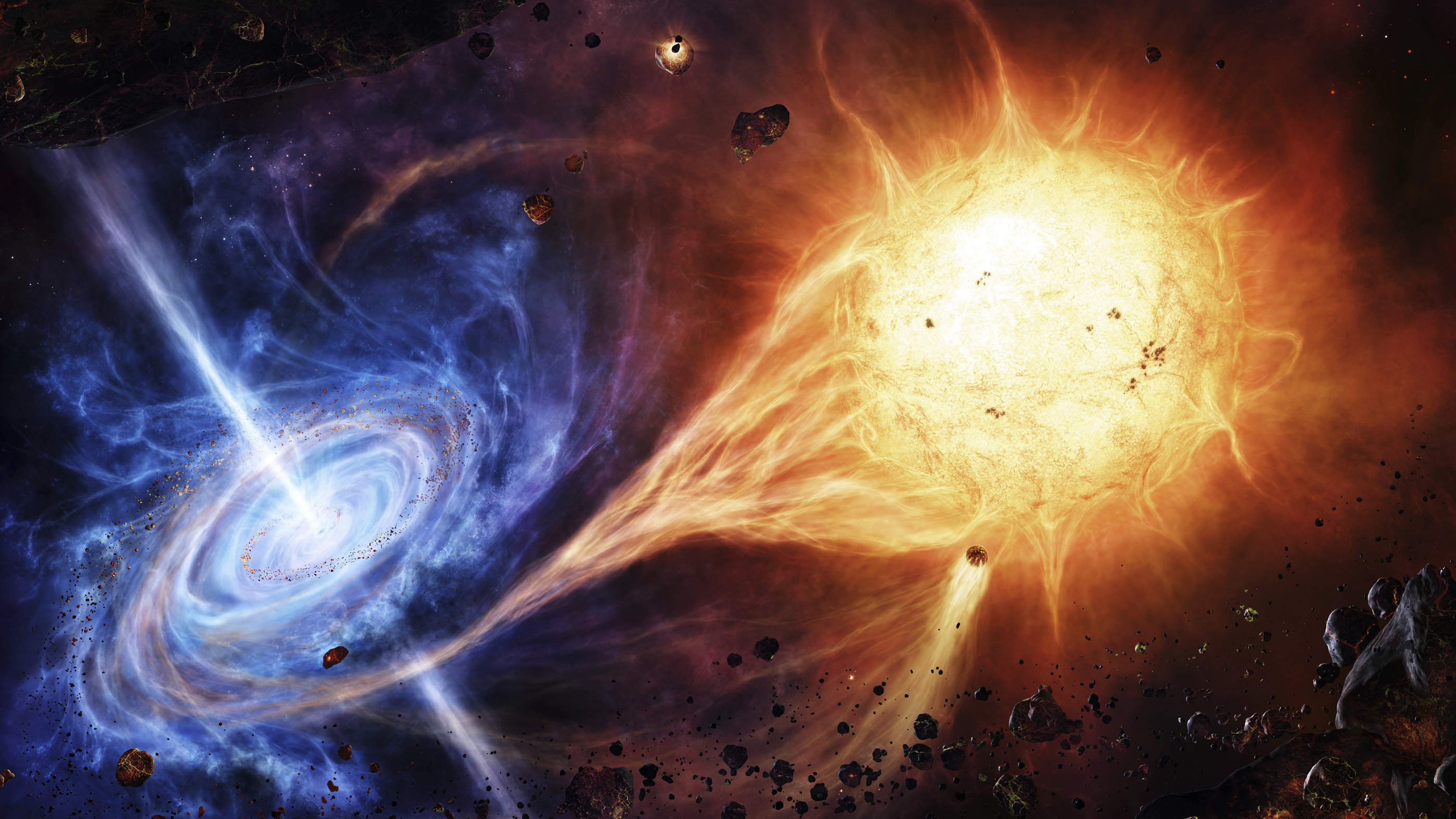A giant black hole suddenly went dark, and no one knows why
What blotted out GRS 1915+105's bright light?

Beginning in 2018, one of the brightest X-ray lights in the sky went dark, and scientists still aren't sure why.
The black hole responsible for creating the lights-out mystery lives in GRS 1915+105, a star system 36,000 light-years from Earth containing both a normal star and the second-heaviest known black hole in the Milky Way. That heavyweight is 10 to 18 times the mass of the sun and second in mass only to Sagittarius A* (or SgrA*), the supermassive black hole in the galactic center. The region around the GRS 1915+105 black hole typically shines with an intense X-ray light, as it feeds on its companion star. As the material circles the cosmic drain, the particles within rub together, generating energy before dropping into the darkness at the black hole's center. That swirling material is the black hole's accretion disk, which lights up with X-rays as the black hole devours more and more sustenance.
But researchers saw something surprising beginning in July 2018: The light from the GRS 1915+105 system began to dim. Then, in early 2019, the light dimmed even more, and no one had ever seen anything like it before.
Related: 10 huge black hole findings from 2020
So what's going on?
"We suggest that this state should be identified as the 'obscured state,'" the researchers wrote in a new paper published Jan. 1 to the arXiv database.
Space.com Collection: $26.99 at Magazines Direct
Get ready to explore the wonders of our incredible universe! The "Space.com Collection" is packed with amazing astronomy, incredible discoveries and the latest missions from space agencies around the world. From distant galaxies to the planets, moons and asteroids of our own solar system, you’ll discover a wealth of facts about the cosmos, and learn about the new technologies, telescopes and rockets in development that will reveal even more of its secrets.
In other words, something has come in between the light source and the Swift X-ray Telescope that's been monitoring the object, obscuring the telescope's view.
Sign up for the Live Science daily newsletter now
Get the world’s most fascinating discoveries delivered straight to your inbox.
Plenty of light is still coming from the bright region near the black hole's event horizon, which astronomer's sometimes call the "engine," as well as the larger "accretion disk" of infalling matter. But that light isn't reaching Earth the way it used to.
"The obscuration geometry" — the precise nature of the structure that's blocking the light — "is hard to discern," said lead study author Mayura Balakrishnan, a graduate student in astronomy at the University of Michigan.
Related: The 12 strangest objects in the universe
No existing telescope can resolve details of the faraway system, so Balakrishnan and her co-authors had to make inferences from how the light coming from GRS 1915+105 changed from day to day between 2018 and 2019.
Black holes with large companion stars sometimes dim because stellar winds from their companions can push clouds of gas in front of their lights.
"In the case of GRS 1915+105," Balakrishnan told Live Science, "the companion star is low-mass and does not have massive stellar winds that would create the observed obscuring gas."
The researchers concluded that "there is a lot of gas in some structure that scatters and blocks light coming from the central engine and accretion disk."
In other words, whatever's blocking the light is likely coming from the accretion disk itself.
The nature of that structure, however, is still a mystery. GRS 1915+105 is interesting to astronomers because its X-ray engine resembles a scale model of the engines that drive many supermassive black holes at the centers of distant galaxies. The difference is that the fuel for supermassive black holes comes from clouds of matter in their galactic cores, while GRS 1915+105 rips its fuel from a neighboring star. So understanding what's going on with this star-eater could shed light on what's going on in the heaviest objects in the universe.
Originally published on Live Science.












